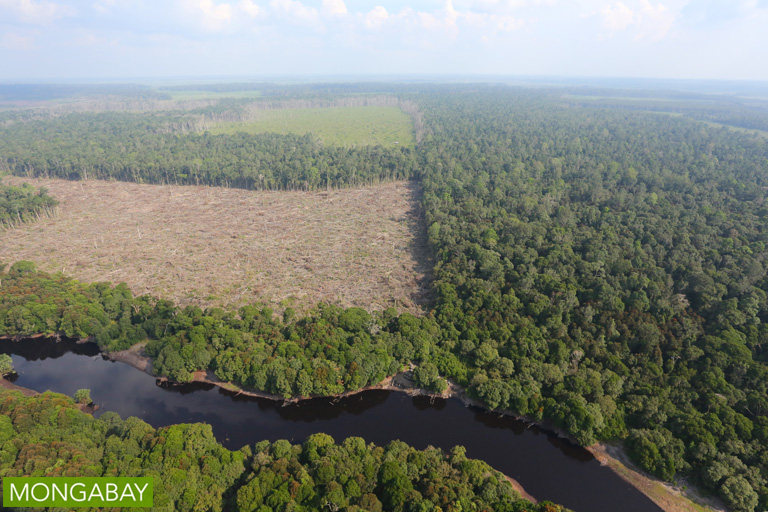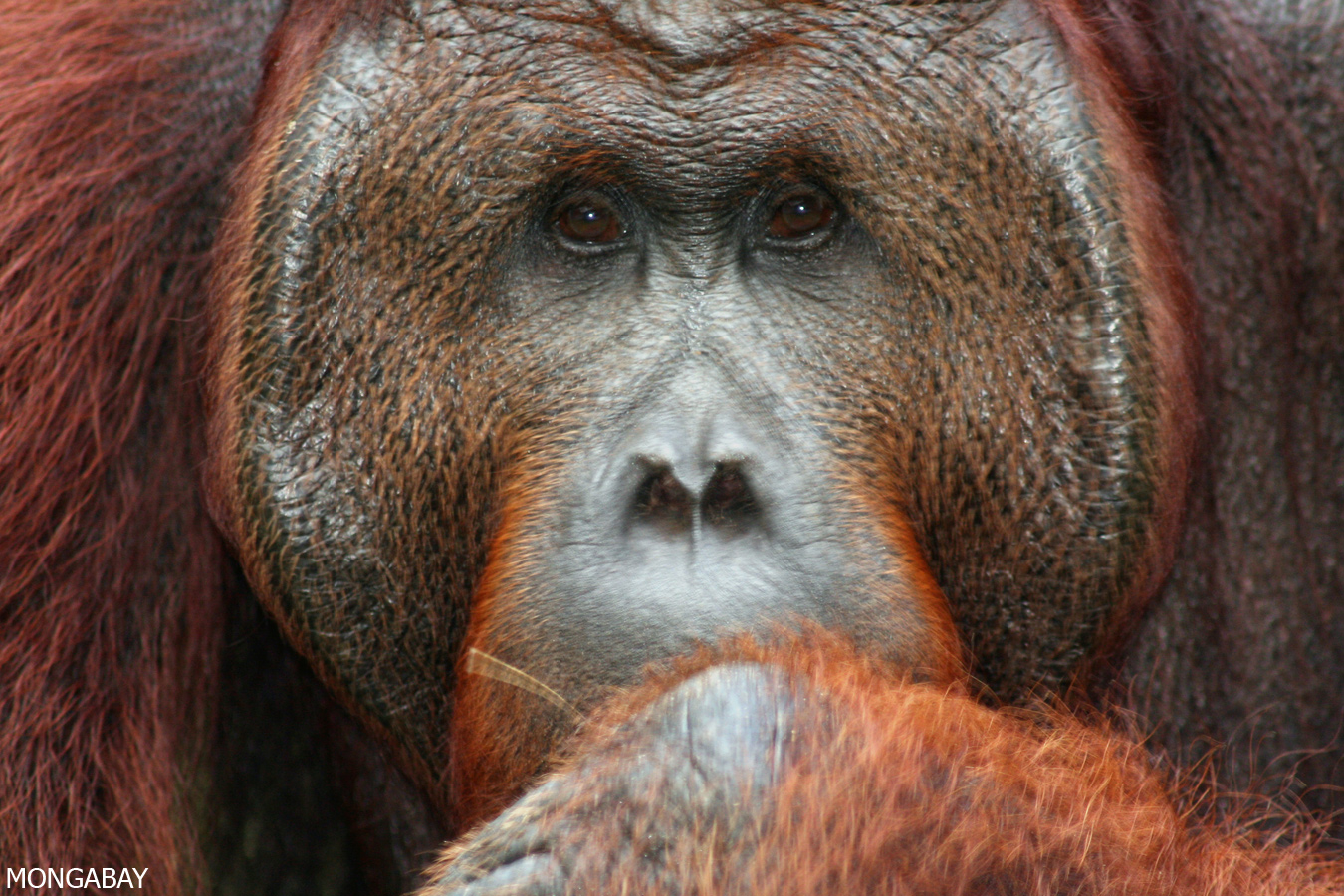- Indonesia and Brazil both have billion-dollar REDD+ agreements with Norway to reduce deforestation and cut carbon emissions in exchange for funding.
- While Brazil has succeeded, Indonesia has not, and has even seen deforestation rates climb, surpassing those in Brazil.
- Fundamental differences in the way the two countries deal with forest issues, particularly in law enforcement and land reform, help explain their different outcomes.
- The Indonesian government hopes to breathe new life into its flagging REDD+ program by emulating the Brazilian model, and speed up the disbursal of funds from Norway by next year.
JAKARTA — Indonesia is taking a page out of Brazil’s playbook as it seeks to catch up on its carbon reduction commitments and net a financial windfall.
Indonesia, a major emitter of carbon dioxide, largely through its forestry sector, has committed to initiatives to reduce emissions from deforestation and forest degradation (REDD+), in exchange for pledged funding of $1 billion from the Norwegian government.
But while Norway has made good on a similar pledge to Brazil, which managed to slash its deforestation rate significantly from 2004 to 2016 thanks to major changes in policies and increased law enforcement, the lack of progress by Indonesia has seen it receive just $112 million of the promised funds to date, according to data from Indonesia’s Ministry of Environment and Forestry.
The ministry now hopes to jump-start the program by emulating the Brazilian model, said Monica Tanuhandaru, executive director of the NGO Partnership of Governance Reform (Kemitraan), which has been appointed by the ministry to implement the program.
“We are inviting Brazil in March next year [to learn from them],” she said in an interview. “We’re not only inviting the government, but also [civil society organizations] that monitor” the implementation of REDD+ in Brazil.
Brazil and Indonesia are both home to vast swaths of dense rainforests, whose destruction is a major source of carbon dioxide emissions. But while Brazil has managed to reduce its deforestation rate by 71 percent from 2004 levels (despite upticks in 2015 and 2016), Indonesia has seen its deforestation rate rise over the years. In 2012, Indonesia surpassed Brazil for the sheer amount of primary forest lost — 8,400 square kilometers (3,243 square miles), compared to 4,600 square kilometers (1,776 square miles) — giving the Southeast Asian nation the world’s highest rate of deforestation.
Brazil’s success in curbing deforestation means it has been able to tap into international funding through REDD+ initiatives, whereby a country is compensated for reducing deforestation — something which Indonesia struggled to do.
Norway has committed more than half of all the global REDD+ funding to date, with the oil-rich Scandinavian country pledging to underwrite tropical forest conservation programs in countries such as Indonesia, Brazil, Liberia, Tanzania, the Democratic Republic of the Congo, and Guyana.
Brazil has collected $1.1 billion from Norway through this scheme since 2008, with the money being channeled to the Amazon Fund, set up by Brazil as part of its REDD+ program. Norway’s deal with Indonesia was signed in 2010, but to date only a fraction of the pledged $1 billion has been handed over.

A tale of two REDDs
The REDD+ program in Indonesia started off promisingly enough. In 2013, then-President Susilo Bambang Yudhoyono established the first agency of its kind in the world, called BP REDD+, to coordinate all efforts under the scheme.
Two years later, though, the agency was disbanded by Yudhoyono’s successor, President Joko Widodo, and its duties and powers taken over by the Ministry of Environment and Forestry. (The move was part of a wider restructuring headlined by the merger of the previously separate ministries of forestry and of the environment.)
Since then, there has been little to no progress on the REDD+ front, with Norway’s climate and environment minister, Vidar Helgesen, saying last year that his government “hadn’t seen actual progress in reducing deforestation in Indonesia.” Helgesen also said he would like to see more results on the ground, given that the partnership had been running for six years.
To understand why Indonesia has not been able to emulate Brazil’s success in what is essentially the same program, one has to look at the history of forest management in both countries, says Arief Wijaya, senior manager for climate and forests at the think tank World Resources Institute (WRI) Indonesia.
When Brazil embarked on its REDD+ journey, the country was already well-equipped to fight deforestation. Research on the Amazon was already underway in the 1970s, and by the 1980s the importance of the region’s tropical forests was gaining traction with the public.
In 1989, the Brazilian government established Ibama, an environmental protection service tasked with cracking down on deforestation in the Amazon. Having a dedicated agency to combat deforestation helped Brazil in coordinating its efforts to slow the loss of its forests, Arief said.
“Since the very beginning, efforts to tackle deforestation in Brazil have been handled by one agency,” he said. “As a result, they’ve had forest data since the 1980s.”
In Indonesia, meanwhile, efforts to tackle deforestation only began in earnest in the 2000s. It wasn’t until 2011 that the government imposed a moratorium on the issuance of new forestry licenses for concessions in primary forests and peatlands, in an effort to curb deforestation and lower carbon emissions from land-use change — which accounted for 60 percent of the country’s total CO2 emissions over the past 10 years.
And unlike in Brazil, REDD+ efforts in Indonesia were managed by multiple institutions. Climate change initiatives fell under the purview of the National Council on Climate Change, or DNPI, which is now defunct; the Ministry of Environment was responsible for reporting on greenhouse gas emissions; the Ministry of Forestry managed the affected sector; and there was the BP REDD+ agency in the mix.
“All these agencies attempted to speed up [REDD+ progress],” Arief said. “But because REDD+ was managed by various institutions, there was a new problem: lack of coordination and communication.”
Now, all REDD+ and climate change initiatives fall under the Directorate General of Climate Change, at the Ministry of Environment and Forestry. This leaves Indonesia in better shape to reduce deforestation and cut emissions, Arief said.

Funding mechanism
Pieces of the puzzle are still missing, though. Indonesia lacks a comprehensive integrated measurement, reporting and verification (MRV) system to account for its progress; nor does it have an official funding mechanism, akin to Brazil’s Amazon Fund.
“These are the biggest hurdles,” Arief said. “How do you measure, report and verify emissions reductions? And after that, how do you disburse the money from top to bottom? It’s still unclear.”
When BP REDD+ was still in charge, it worked on a funding scheme called Financing REDD+ in Indonesia (FREDDI). Its purpose was to distribute financial assistance via grants, investments and trade intermediaries. But the scheme was scrapped along with BP REDD+. In its place, the government moved to establish a new funding instrument that would underwrite all environmental initiatives, not just those under REDD+.
The establishment of the new entity, known by its Indonesian acronym, BLU, is pending a presidential decree, which is expected to be issued soon.
The BLU is designed to have more leeway in managing its own finances as it can invest outside the state budget and receive revenue from its own activities, according to the Climate Policy Initiative (CPI), an advisory body that Norway has asked to liaise between Indonesia’s Ministry of Finance and Ministry of Environment and Forestry on the design of the funding mechanism.
Besides the BLU, the Ministry of Environment and Forestry is also developing an MRV system to report on emissions reductions as a result of REDD+ actions, according to Minister Siti Nurbaya Bakar.
To ensure a reliable MRV system, the ministry last year set up the National Registry on Climate Change Oversight, a database for registering climate mitigation activities throughout the country. All initiatives to reduce emissions must be registered first, Siti said. The ministry is also preparing to establish a clearinghouse for climate change data.
“We can’t afford to be left behind [in REDD+] anymore,” Siti said.

Law enforcement and land reform
With the MRV system and the BLU now in the works, Indonesia hopes to receive its first payment from Norway for actually protecting its tropical forests by mid-2018.
The $112 million paid to date was only for Indonesia to prepare its REDD+ instruments. Once all the instruments are in place and there are actual reductions in emissions that can be verified on the ground, Norway will deliver an $800 million tranche of results-based payment.
“If we already have the financial instrument, then we could follow the example of Brazil with its Amazon Fund, which can be used for education and health,” said Kemitraan’s Tanuhandaru.
The ministry has also launched a nine-point program on “REDD+ capacity and infrastructure enhancement.” The program calls for supporting effective law enforcement; acceleration and strengthening of social forestry; and building better systems for mapping and methodology to measure emissions reductions related to REDD+.
“Enforcement to prevent illegalities and create a level playing field for investors is perhaps the most important starting point,” Vegard Kaale, the Norwegian ambassador to Indonesia, said at the launching of the program.
Arief agreed that strong law enforcement should be the cornerstone of Indonesia’s fight against deforestation, given its success in Brazil. Since 2014, the government has stepped up its prosecution of environmentally destructive companies, notching up a string of victories.
However, the ministry is struggling to collect the damages awarded by the courts. And last year, 15 plantation firms that the ministry had linked to catastrophic forest and peatland fires in 2015, avoided prosecution after police in Riau, Indonesia’s top palm oil-producing province, dropped the charges against them.
“[Brazil] succeeded because they implemented a new forest code, in which one of the main points is law enforcement in the forestry sector,” Arief said. By contrast, he said, “law enforcement in Indonesia is relatively weak.”
Another point that both Kaale and Arief emphasized was strengthening the role of indigenous and local communities in protecting forests through land reform.
There are two landmark government policies on land reform: distribution of land certificates, and social forestry. Under the certification program, the government aims to legalize land ownership on 45,000 square kilometers (17,374 square miles) and to redistribute another 45,000 square kilometers that was previously included within forest areas.
To date, the government had only legalized titles to 5,083 square kilometers (1,963 square miles) of land and redistributed 1,870 square kilometers (722 square miles) to locals, according to data from the Presidential Chief of Staff (KSP).
Arief said Indonesia should follow the example of Ecuador, which implements a clear system of reward and punishment in recognizing indigenous people’s rights to manage the forests.
Besides the certification program, the government has also granted legal access to communities living in and around forests to manage forest resources through the social forestry scheme. President Joko Widodo has promised to allocate 127,000 square kilometers (49,034 square miles) of forests to be managed by communities by 2019 under this scheme.
According to official data, however, the government has granted forest management access to just 10,534 square kilometers (4,067 square miles) as of August this year.
If law enforcement is strengthened and land reform programs are implemented properly, Arief said, Indonesia’s deforestation rate should slow.
“I believe that these two issues [law enforcement and land tenure] are the root drivers of deforestation in Indonesia,” he said. “So deforestation in Indonesia will go down when these two things are solved.”
Banner image: REDD+ is designed to keep tropical forests standing, and carbon sequestered. Photo by Rhett A. Butler.